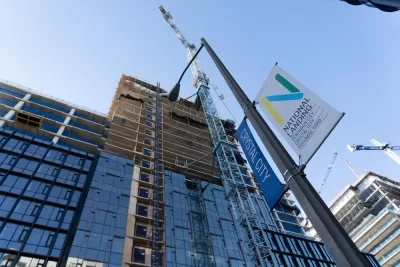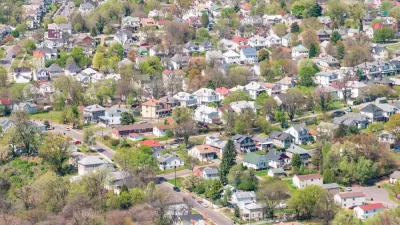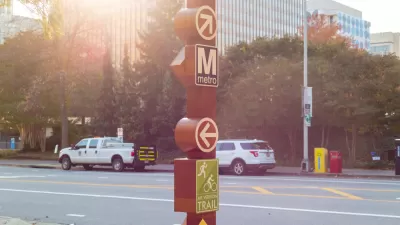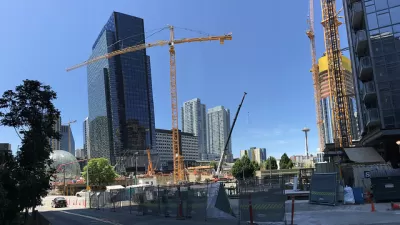Of the thousands of units Amazon has secured as part of its pledge to create affordable housing near its new headquarters, just over 200 are reserved for the lowest-income renters.

“Amazon sought to tamp down fears about displacing residents around its new Northern Virginia headquarters with a pledge last year to create and preserve thousands of affordable housing units in the D.C. area’s notoriously tight market.” But as Teo Armus reports, “For now, though, Amazon’s efforts will likely do little to move the needle for the region’s lowest-income residents, many of whom are already stretching their paychecks to make rent every month.”
Armus writes that “Of more than 4,100 units secured so far, just 215 will be set aside for residents who make 50 percent or less of the area median income.” Housing advocates worry that rising costs will push workers farther out from job centers, creating additional traffic and emissions as they are forced to commute longer distances.
In an interview, Catherine Buell, director of Amazon’s Housing Equity Fund, said the problem is too large for “even an Amazon” to solve on its own. “Amazon doesn’t own the affordable housing challenges, and governments are primarily responsible for managing the housing issues in their community. We’re here to be a partner.”
The article goes on to describe the difficult situations facing many workers in the region and similar efforts by other tech companies to create more affordable housing for their employees. “Some saw those efforts as a tacit recognition from these tech titans that they also needed to stabilize housing prices to attract their desired workforce. Homes in many parts of Silicon Valley have become prohibitively expensive even for well-paid software engineers, and Northern Virginia is not far behind.”
FULL STORY: Amazon’s $2B housing push has mostly left out D.C. area’s poorest

Study: Maui’s Plan to Convert Vacation Rentals to Long-Term Housing Could Cause Nearly $1 Billion Economic Loss
The plan would reduce visitor accommodation by 25,% resulting in 1,900 jobs lost.

North Texas Transit Leaders Tout Benefits of TOD for Growing Region
At a summit focused on transit-oriented development, policymakers discussed how North Texas’ expanded light rail system can serve as a tool for economic growth.

Using Old Oil and Gas Wells for Green Energy Storage
Penn State researchers have found that repurposing abandoned oil and gas wells for geothermal-assisted compressed-air energy storage can boost efficiency, reduce environmental risks, and support clean energy and job transitions.

From Blight to Benefit: Early Results From California’s Equitable Cleanup Program
The Equitable Community Revitalization Grant (ECRG) program is reshaping brownfield redevelopment by prioritizing projects in low-income and environmental justice communities, emphasizing equity, transparency, and community benefits.

Planting Relief: Tackling Las Vegas Heat One Tree at a Time
Nevada Plants, a Las Vegas-based nonprofit, is combating the city’s extreme urban heat by giving away trees to residents in underserved neighborhoods, promoting shade, sustainability, and community health.

How Madison’s Tree Planting Efforts Are Growing a Healthier Community
Madison’s annual tree planting initiative is enhancing environmental resilience, public health, and community livability by adding 1,400 carefully selected trees citywide, with strong community and institutional support for urban forestry.
Urban Design for Planners 1: Software Tools
This six-course series explores essential urban design concepts using open source software and equips planners with the tools they need to participate fully in the urban design process.
Planning for Universal Design
Learn the tools for implementing Universal Design in planning regulations.
Ascent Environmental
Borough of Carlisle
Institute for Housing and Urban Development Studies (IHS)
City of Grandview
Harvard GSD Executive Education
Toledo-Lucas County Plan Commissions
Salt Lake City
NYU Wagner Graduate School of Public Service





























